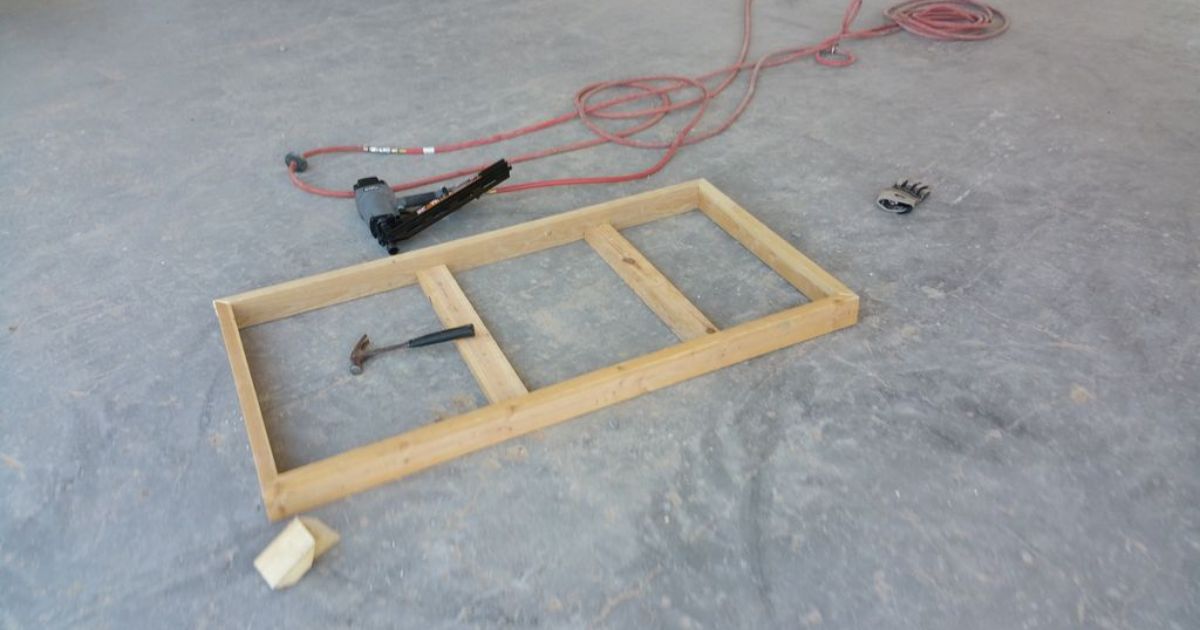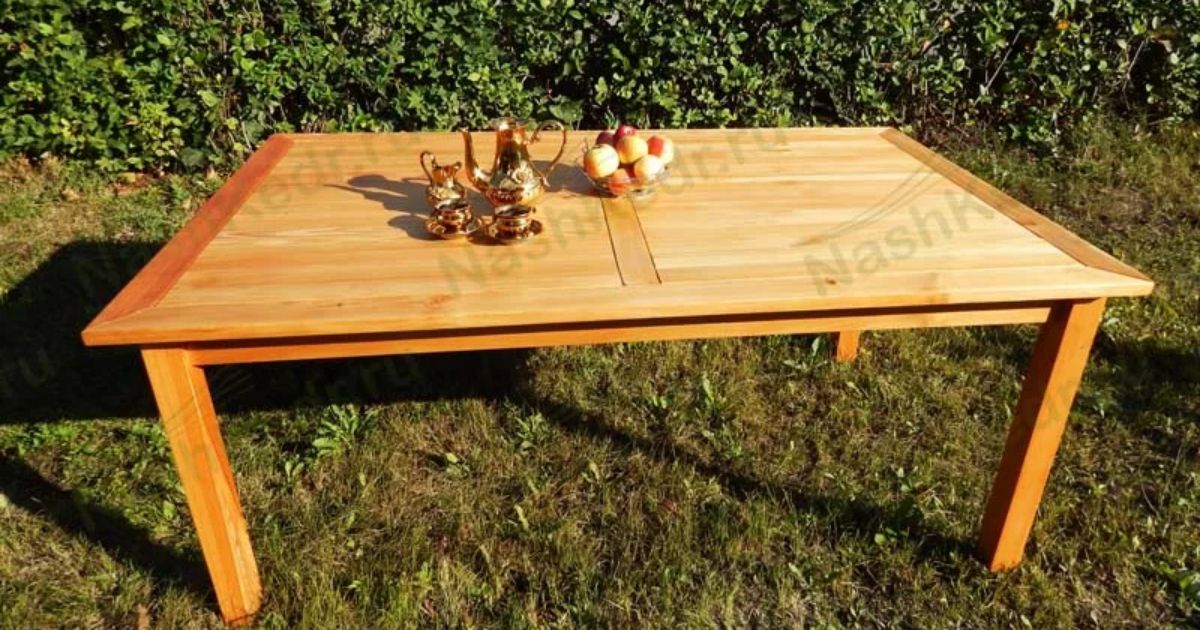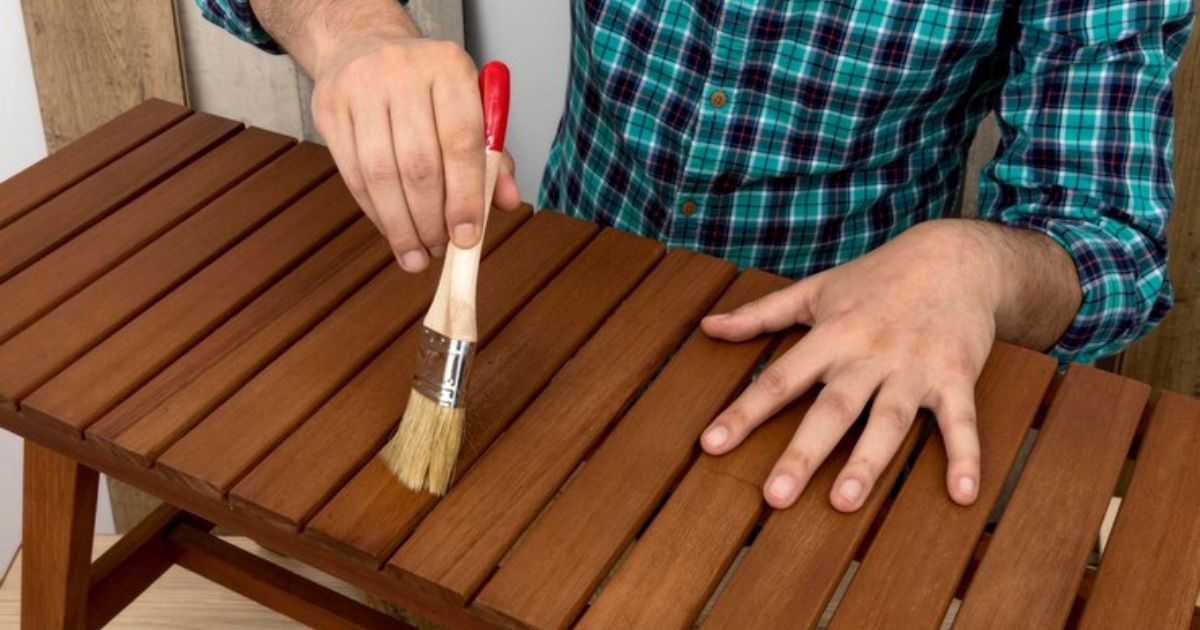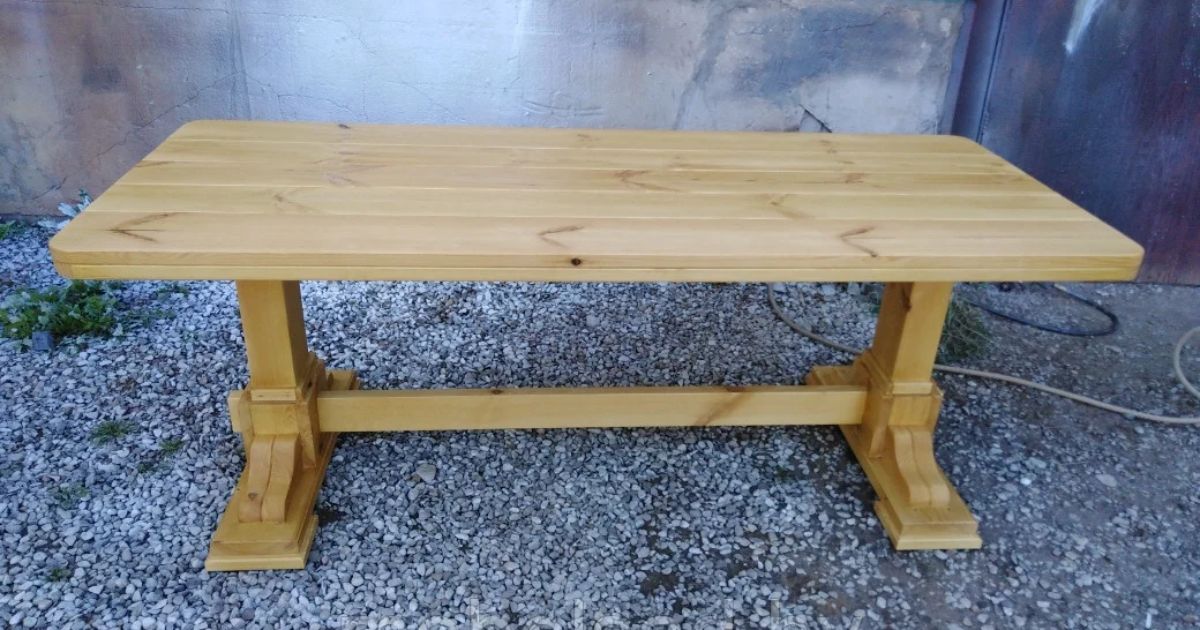According to recent statistics, the demand for DIY furniture projects has been steadily increasing, as more individuals seek to personalize their living spaces. If you’re looking to add a touch of rustic charm to your home, consider building a coffee table out of 2x4s.
In this practical guide, we will provide detailed instructions on selecting the right materials, measuring and cutting wood pieces, assembling the frame, attaching the tabletop, and adding the finishing touches. Join the growing community of DIY enthusiasts and create a coffee table that perfectly complements your space.
Key Takeaways
- Consider different wood grades, alternative materials, budget, and desired look
- Use accurate measurements and sharp cutting tools
- Properly align the tabletop with the frame
- Start with coarse grit sandpaper and progress to finer grits
Choosing the Right 2x4s for Your Coffee Table
When selecting 2x4s for your coffee table, it is important to consider various factors to ensure you choose the ones that best meet your specific needs. One of the first things to consider is the wood grade. Different grades of wood have different qualities and strengths.
If you are looking for a more durable and aesthetically pleasing option, consider choosing a higher grade of wood. On the other hand, if you are on a budget or prefer a more rustic look, a lower grade may be suitable.
Another option to consider is using alternative materials for your coffee table. While 2x4s are commonly used, you can also explore other materials such as reclaimed wood or metal to add a unique touch to your coffee table design.
Measuring and Cutting the Wood Pieces
To ensure precise dimensions and proper fit, accurate measurements must be taken before cutting the wood pieces for the coffee table. Measuring accuracy is crucial to avoid errors that can affect the overall appearance and stability of the table. Begin by using a tape measure to measure the required length and width of each piece.
Take into account any additional measurements for joinery or decorative features. When marking the measurements on the wood, use a pencil or a marking knife for clear and accurate lines. Cutting techniques play a significant role in achieving clean and precise cuts. Consider using a miter saw or a circular saw, ensuring that the blade is sharp and aligned properly.
Take your time and follow the marked lines closely to ensure each piece is cut accurately. Remember, accuracy in measuring and cutting will result in a well-constructed coffee table that fits together seamlessly.
Assembling the Frame of the Coffee Table

When assembling the frame of the Coffee Table Ideas with Plans, there are several key points to consider. First, it is important to accurately measure the wood pieces to ensure a proper fit. Second, joining the corners securely is crucial for the stability and longevity of the coffee table.
Lastly, adding reinforcement, such as brackets or corner braces, can further enhance the stability of the frame. By following these points, you can assemble a strong and durable coffee table frame.
Measuring Wood for Frame
The dimensions of the wooden pieces required for constructing the frame of the coffee table can be accurately determined through careful measurement.
By using proper measuring techniques, you can avoid common mistakes that could lead to an ill-fitting or unstable frame. Here are three essential steps to measuring the wood for your coffee table frame:
- Measure the length and width: Begin by measuring the length and width of the tabletop. This will help you determine the dimensions of the frame pieces needed to fit perfectly underneath.
- Account for the thickness: Take into account the thickness of the wood you will be using for the frame. Subtract the thickness from the measurements you obtained in step one to determine the length and width of the frame pieces.
- Cut the wood accordingly: Use a saw to cut the wood pieces based on the measurements calculated in step two. Remember to measure twice and cut once to ensure accuracy.
Joining Corners Securely
Once you have accurately measured and cut the wood pieces for the frame of the coffee table, you can proceed to join the corners securely using appropriate techniques. There are several joining techniques you can employ to ensure a strong and stable frame. The choice of technique depends on your skill level, desired aesthetic, and tools available. Here are some commonly used joining techniques along with the tools needed:
| Joining Technique | Tools Needed |
|---|---|
| Butt Joint | Miter saw, drill, screws, glue |
| Pocket Hole | Pocket hole jig, drill, screws, glue |
| Mortise and Tenon | Table saw, chisel, mallet, glue |
| Dowel Joint | Drill, dowel jig, dowels, glue |
| Biscuit Joint | Biscuit joiner, glue |
Adding Reinforcement for Stability
To ensure maximum stability, it is imperative that you carefully assemble the frame of the coffee table by adding reinforcement. Here are three reinforcement techniques that will strengthen your coffee table:
- Brackets: Attach metal brackets at the corners of the frame to provide extra support. Use screws to secure the brackets firmly in place.
- Wood Glue: Apply wood glue to the joints before joining them together. This will create a strong bond and prevent the frame from coming apart over time.
- Dowels: Insert wooden dowels into pre-drilled holes to reinforce the joints. Apply wood glue to the dowels before inserting them for added strength.
Attaching the Tabletop to the Frame
Securely fastening the tabletop to the frame is a crucial step in constructing a durable and stable coffee table. To ensure a strong connection, it is essential to use appropriate attaching hardware. Start by placing the tabletop onto the frame, aligning it properly.
Then, use screws or nails to attach the tabletop to the frame. Make sure to position the fasteners at regular intervals along the perimeter of the table for even support. It is also advisable to pre-drill holes to prevent splitting of the wood.
To protect the wood from moisture and increase its longevity, consider sealing the wood with an appropriate wood sealer or finish. This will not only enhance the appearance of the coffee table but also provide protection against spills and stains.
Sanding and Finishing the Coffee Table

To achieve a smooth and polished finish on your coffee table and, simultaneously, to attach legs to a coffee table, it is important to employ effective sanding techniques. This involves starting with a coarse grit sandpaper to remove any imperfections or roughness on the tabletop, then gradually progressing to finer grits for a smooth surface. Once the tabletop is prepared, you can proceed to attach legs securely, ensuring your coffee table is both aesthetically pleasing and functional.
Choosing the right finish is crucial in enhancing the appearance and protecting the wood. Make sure to apply the chosen finish evenly, following the manufacturer’s instructions, for a professional and long-lasting result.
Sanding Techniques for Smoothness
Utilize a fine-grit sandpaper to achieve a smooth and polished surface on the coffee table. Sanding is a crucial step in the finishing process as it helps to remove any imperfections and roughness from the wood. Here are three sanding techniques to achieve a smooth surface:
- Start with a coarse-grit sandpaper: Begin by using a 60 or 80-grit sandpaper to remove any rough spots or uneven surfaces. Sand in the direction of the wood grain, applying even pressure.
- Progress to a medium-grit sandpaper: Once the surface is relatively smooth, switch to a 120 or 150-grit sandpaper. This will help to further refine the surface and remove any scratches left by the coarse-grit sandpaper.
- Finish with a fine-grit sandpaper: Finally, use a 220 or 320-grit sandpaper for the final sanding. This will create a silky smooth surface and prepare the wood for finishing.
Remember to wipe away any dust between sanding stages and always sand in the direction of the wood grain for the best results.
Choosing the Right Finish
Applying an appropriate finish is essential for sanding and finishing the coffee table, as it not only enhances the appearance but also protects the wood from damage and wear. Before applying the finish, it is important to ensure that the surface is smooth and free from any imperfections.
This can be achieved by using various sanding techniques, such as starting with coarse-grit sandpaper and gradually moving to finer grits for a polished finish. Once the sanding is complete, you can choose from a variety of sealing options, such as polyurethane, varnish, or wax, depending on your desired level of protection and aesthetic preference.
These sealants not only provide a protective layer but also add a beautiful sheen to the wood. With the right finish in place, you can now move on to the next step of applying the finish evenly, ensuring a professional and polished appearance.
Applying Finish Evenly
A key aspect of achieving a professional and polished appearance for the coffee table is to evenly distribute the finish across the surface. This step is crucial in order to prevent blotching and ensure a smooth and consistent finish. Here are three tips to help you apply an even finish to your coffee table:
- Sand the surface: Before applying the finish, it is important to sand the surface of the coffee table. This will help remove any imperfections and create a smooth base for the finish to adhere to.
- Apply a pre-stain conditioner: To prevent blotching, it is recommended to apply a pre-stain conditioner before applying the actual finish. This conditioner helps to seal the wood and create a more even absorption of the finish.
- Use even strokes: When applying the finish, use even strokes and work in the direction of the wood grain. This will help distribute the finish evenly and minimize any streaks or uneven spots.
Adding the Final Touches: Stain, Paint, or Sealant

To achieve a polished and finished look, consider applying a suitable stain, paint, or sealant to the coffee table. Each option has its own advantages and can help achieve different aesthetic goals. If you prefer a rustic look, staining the wood is a great choice.
Stain enhances the natural beauty of the wood grain and adds depth and warmth to the table. On the other hand, painting the table provides more versatility in terms of color options and allows you to match it with your existing decor. When it comes to sealants, there are different types available for different finishes.
For a glossy finish, a polyurethane sealant is recommended, while a matte finish can be achieved with a wax sealant. A table with a distressed look can benefit from a distressed finish sealant. Consider your desired outcome and choose the appropriate finish for your coffee table.
| Stain | Paint | Sealant |
|---|---|---|
| Enhances natural wood grain | Versatile color options | Different types for different finishes |
| Adds depth and warmth | Matches existing decor | Glossy, matte, or distressed finish |
| Rustic look | Can be customized | Protects the wood |
| Enhances durability |
Frequently Asked Questions
How Long Will It Take to Build a Coffee Table Out of 2x4s?
Building a coffee table out of 2x4s requires careful planning, measuring, cutting, and assembly. The time it takes to complete the project will depend on your skill level and the complexity of the design.
Can I Use Different Types of Wood Instead of 2x4s?
It is possible to use alternative wood options when building a coffee table, however, it is important to consider the pros and cons of different types of wood in terms of durability, cost, and aesthetic appeal.
What Tools Do I Need to Build a Coffee Table?
To build a coffee table, you will need a variety of tools such as a circular saw, drill, sander, and clamps. Different types of finishes can be used to enhance the appearance of the table. Tips for joining 2x4s together include using screws or dowels for added stability.
How Much Weight Can a Coffee Table Made From 2x4s Hold?
When considering the weight capacity of a coffee table made from 2x4s, it is important to reinforce the structure properly. Techniques such as adding cross braces and using sturdy fasteners can enhance its strength. Selecting the right finish can provide durability and protection.
How Much Does It Cost to Build a Coffee Table Out of 2x4s?
When considering the cost of building a coffee table, it is important to compare the expenses of using 2x4s versus other types of wood. DIY tips and tricks can help in creating a budget-friendly coffee table using 2x4s.
Conclusion
In conclusion, building a coffee table out of 2x4s is a practical and rewarding project for DIY enthusiasts. By carefully selecting and measuring the wood pieces, assembling the frame, attaching the tabletop, and sanding and finishing the table, you can create a beautiful and functional piece of furniture.
Whether you choose to stain, paint, or seal the table, the final touches will add the perfect finishing touch to your coffee table.








